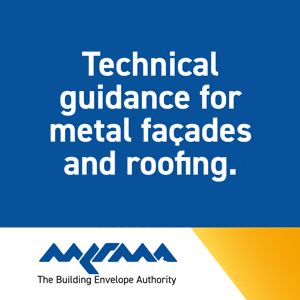Fabric-first design key to thermal efficiency
- Specify & Build
- Jun 2
- 3 min read
Ciaran McAliskey, Specification Manager at Keystone Lintels, explains how a one-piece, thermally-efficient lintel can significantly improve SAP ratings and eliminate the need for costly renewable technologies as part of a fabric-first approach.
Set to become mandatory for all new homes in 2025, the Future Homes Standard (FHS) is an opportunity to deliver much needed energy efficient housing and stay on track with our climate ambitions. Making sure the envelope of a building is as good as it can be is essential, with attention to detailing and thermal bridging eliminating some of the issues that create poorly performing homes.

The revisions to Part L requirements of the Building Regulations represent progress towards the 2025 Future Homes Standard but reaching these goals requires a focused and upfront effort on the design of a building’s envelope. The June 2022 interim Part L uplift to energy efficiency requirements demanded 31% lower carbon emissions from all new homes through a combination of fabric improvements, low-carbon heating and PV panels. However, 2025 has spurred an even bigger transformation for new housing, with 75-80% emissions cuts mandated. To achieve such dramatic cuts now requires housebuilders to prioritise thermally efficient building fabrics from day one.
In 2025, optimising the thermal performance of the building envelope through intelligent design and a fabric-first approach is essential. Constructing an airtight, well-insulated building fabric that minimises heat loss will be key to hitting energy and emissions targets and achieving compliance, both for large developments and individual houses. Enhancing the building’s envelope efficiency also provides occupants with superior thermal comfort and air quality. This creates more comfortable indoor spaces which, in turn, can enhance productivity, health and overall wellbeing.
Building as designed
A core element of the fabric-first approach is addressing thermal bridging, which can account for up to 30% of a home’s heat loss if not managed correctly. Eliminating thermal bridging through intelligent design and correct product specification will be vital to meet these ambitious new regulations. However, the industry often fails to consistently build what we design, using incorrect products or detailing. Workmanship and site skills can also cause issues, leading to a performance gap between as-designed and as-built building performance, with weak spots significantly impacting heat loss and overall fabric performance.
The Building Regulations Part L report details the required materials that must be installed without substitution, unless the report is recreated or amended by an energy assessor. Building control can use this report as a checklist and may ask for thermal elements to be recalculated if you swap brands or material types of different thermal values. Part L now states the actual thermal transmittance values are used for building products within the building envelope; in the past, generic accredited construction detail values were accepted within the SAP assessment. These values could vary substantially from the actual value of a specific product. By making this change, the Y value obtained is now accurately represented within the report.
Photographic evidencing
One of the standout changes from Part L helping to bridge the performance gap is the requirement for photographic evidencing of key junctions at the relevant construction stage for every new dwelling. This will need to have geo-location technology activated, and the report will be provided to building control and the building owner. Essentially there will need to be proof that the dwelling has been constructed from the same materials it was designed from; ensuring the property runs as efficiently as it should.
High-performance lintels
Traditional steel lintels can create major thermal bridges in homes due to steel’s high thermal conductivity and typical long spans. However, solutions such as Hi-therm+ address this. By incorporating a thermal break, Hi-therm+ is up to five times more thermally efficient than standard lintels; a cost-effective solution that will save energy over a home’s lifespan when the fabric is done right. A recent enhancement to the Hi-therm+ Lintel is pre-fitted insulation with a higher content of recycled materials, boosting thermal efficiency even more. With up to 20% increase in performance, Hi-therm+ Lintels can improve overall junction Psi values by up to 15%.
.png)























































.png)

